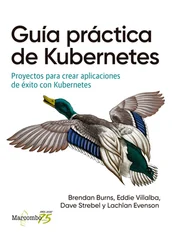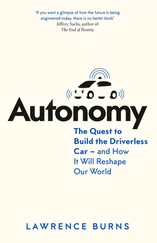The assembly work happened in a big garage in Carnegie Mellon’s Planetary Robotics building. Envision the best mechanics shop you’ve ever seen, and you’ll be close to this workspace. The ceiling is a few stories tall, with gangways and a small-scale version of a crane, the better to lift heavy objects. Lathes and drill presses, drawers full of every implement imaginable, as well as computer diagnostic equipment—every available horizontal surface features tools. It is the kind of place where you could literally make almost anything.
The venue would host Urmson and the members of his team pretty much nonstop through that Thanksgiving weekend. By the end of it, enough computers were wired together, and enough sensors mounted, that Sandstorm felt like it was coming alive. It was around this period that the team found the perfect place to test their Frankenstein’s monster. There weren’t many spots with convenient access to the CMU campus where a 5,000-pound, exhaust-snorting, diesel-gulping, oil-dripping robot could push the limits of its abilities without risking civilian fatalities. It was Mickey Struthers, the postman volunteer, who thought of the solution. One day while he was driving over Pittsburgh’s Hot Metal Bridge on the way to Carnegie Mellon, Mickey noticed the lights along the shores of the Monongahela River twinkling in the cool evening air. All except for a vast swathe of dark shoreline to the right of the bridge. Mickey knew that was industrial land that had once housed Pittsburgh’s last steel mill, the LTV Coke Works, which had closed in 1998. Since then the land had sat fallow.
Struthers suggested the site to Whittaker, who loved the idea for both its convenience as well as its industrial heritage. The 168-acre land parcel housed a railroad roundhouse and numerous outbuildings and equipment that made it seem as though it was left over from the industrial revolution, connecting the team to the same brawny spirit that had built Pittsburgh so many decades ago. With a few phone calls to the wealthy family foundations that owned the land, Whittaker arranged for the team to test there.
On the second of December, the team took the first of what would become many test runs at the Coke Works. The distressed location with its spent oil cans and rusted industrial detritus seemed appropriate for the ancient-looking Humvee, which just in general seemed to have more in common with a Jurassic-era dinosaur than one of the most innovative mechanical devices ever assembled. Snow covered the ground. The temperature was eighteen degrees. “Just like the Mojave Desert, huh?” shouted one team member, according to a Wired article. (Whittaker, meanwhile, was wandering around in a knit shirt, jeans and boots he wore without socks.) Urmson climbed aboard for the first run to manually hit the emergency stop button if the robot suddenly went crazy. The robot swerved toward a precipice when first activated, then settled and drove its course as expected. After a few uneventful laps Urmson decided, at 7:51 P.M., to see what would happen when he gave Sandstorm free rein. He clambered off the robot. The team programmed in a series of GPS waypoints that drew a dot-to-dot version of an oval. Not sure whether to breathe, the team watched the robot roll along its route for half an hour, ultimately accumulating four miles. No accidents. No incidents of any kind, in fact. They were nowhere near making their 150 miles yet, but that evening, it was difficult to deny they were progressing toward their goal.

Another week passed, and late in the evening on the tenth of December, with just a couple of hours before the midnight deadline by which Urmson and the team had promised Whittaker that Sandstorm would be able to drive 150 miles on its own, the robot was not cooperating. Bugs arose in the self-driving software every time it drove more than a few laps. Urmson and his fellow teammates had been camped out for days at the Coke Works, if you called camping sleeping in your running car with the heat on full blast. Despite daylong debugging sessions, Sandstorm remained unpredictable and occasionally suicidal—lurching into a telephone pole, catching fire, becoming suddenly unable to sense GPS signals. A calm spell saw the Humvee revolving the track, again, again, again, and then for no apparent reason, swerving off course and running itself through a chain-link fence before Urmson could activate the e-stop. Sometime later, with Sandstorm liberated from the barbed wire and the deadline approaching, Whittaker gathered Urmson and everyone else around him, according to Gibbs. Sure, the December 10 deadline approached—but even if it passed, Whittaker vowed, they’d continue their work, through tomorrow, and even the next day if necessary, until Sandstorm achieved the 150-mile goal. “We say what we’ll do, and we do what we say,” vowed Red in Scientific American .
Then it started to rain—a frigid December drizzle that soaked clothing and chilled to the bone. Sandstorm was not well protected against rain. One of the dozen or so team members still on site spread a tarp over the robot’s computer equipment. Red wasn’t around. Gibbs wrote that Urmson looked at his teammates, shivering in dripping lean-tos under blankets. He thought about the possibility of the falling moisture disabling one of their sensors, or shorting out a processor. Perhaps he also thought about his wife and baby boy back home. And he decided to send the team home.
Whittaker was livid when everyone showed up to the Coke Works the following day, Gibbs reported, comparing the team leader to “an angry coach at halftime.” He ranted about all the sacrifices they’d made to try to achieve the 150-mile goal. The shop was a mess, the robot unpainted, the website out of date—all that work went undone as everyone concentrated on getting Sandstorm in the sort of shape required to make its race run. To a roomful of people unwilling to meet his gaze, Whittaker said, “Yesterday we lost that sense deep inside of what we’re all about. What we have just been through was a dress rehearsal of race day. This is exactly what the 13th of March will be like. We’re in basic training; this is all about cranking it up a notch. Come March, we will be the machine.” Whittaker concluded his venting, Gibbs reported, by asking who was willing to work all day, every day, for the next four days, until they completed their nonstop 150-mile run. Fourteen team members in the room raised their hands. Including Urmson.

Two days later, U.S. soldiers captured Saddam Hussein in a spider hole near Tikrit, and the war in Iraq dominated headlines and the cable news channels as it never had. Every day, the news seemed to feature more casualties from IEDs in Iraq or Afghanistan—fatalities Red Team members hoped the robot vehicles might one day prevent. Then the overseas conflicts supplied Urmson with an idea.
In recent years, maps had become a crucial component of successful robotics. Maps allowed robots to locate themselves in the world much more accurately than GPS alone. A technique called simultaneous localization and mapping, abbreviated to SLAM, saw a robot scan an area with LIDAR to map the permanent landmarks—in exterior spaces, things like trees, light poles, road curbs and buildings. Then, the next time the robot traveled the same territory, it would consult its map and compare its position relative to the previous landmarks, to get an ultra-accurate idea of where it was. Problem was, Sandstorm couldn’t use this technique, because DARPA was keeping the race location secret.
Then, one day, Urmson was watching coverage of the war on one of the cable news channels. The scene will be familiar to anyone who lived through the post-9/11 period—a grainy portrait of an SUV traveling fast along a remote desert road. From somewhere in the distance, a rocket blazes into the picture, collides with the SUV and obliterates the vehicle in a blast of dust and metal.
Читать дальше













